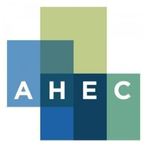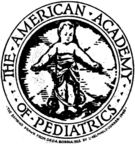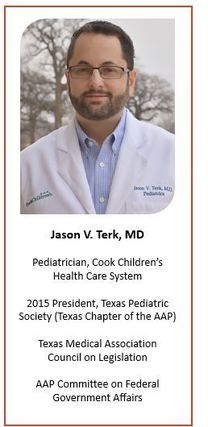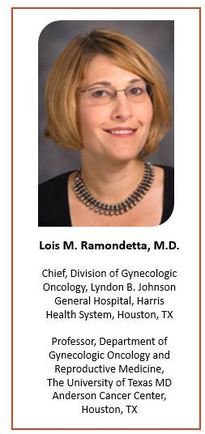
Everything is bigger in
Texas including a REALLY BIG opportunity to raise national HPV
vaccination rates! Fun fact, Texas
has the biggest population of adolescents eligible to be vaccinated. More specifically, nearly 11% of all adolescents
in the United States needing HPV vaccine live in Texas. Feel free to share that
tidbit at your next HPV vaccine get-together.
For the past few months
we’ve highlighted five partner organizations funded to focus on HPV vaccination
coverage improvement. In this special State Spotlight edition of
#PreteenVaxNews, we are sharing the big projects that these, and other partners,
started in Texas in the past few years.
These Texas partner
spotlights can be a resource to other states and organizations who are looking
for ways to boost their HPV vaccine coverage improvement activities.

National
AHEC Organization (NAO)
NAO developed initiatives to provide training
and materials for clinicians about the importance of an effective HPV
vaccination recommendation. Since the project’s inception, NAO has worked with more
than 44 states on HPV vaccine educational activities. In Texas, the Mid Rio
Grande Border Area Health Education Center (AHEC), located along the
U.S./Mexico border, and the Texas AHEC East-Piney Woods Region, are forming
successful partnerships. These partnerships are carrying out the important work
of bolstering effective HPV vaccine recommendations among clinicians.
NAO provided continuing education on HPV
vaccination to over 2,000 health care professionals, including physicians,
nurses, pharmacists, social workers, counselors, and other allied health
providers. NAO provides this education through webinars, live presentations,
and roundtable discussions. For example, the 31st Annual Update in Medicine
held in Laredo trained 210 clinicians on HPV vaccination. Attendance included
participants from various counties in South Texas and across various health
professions.
The Texas AHECs are continuing to reach both practicing
and future clinicians through a variety of activities including trainings for school
nurses during their staff development meetings, and for allied health and nursing
students enrolled at community colleges. Social service providers are trained
to support the HPV vaccination messages when they see patients and their
parents for social services. AHEC also promotes other local, regional, and
national trainings on HPV vaccination to their clinician network and health
profession students.
|

National
Association of County and City Health Officials (NACCHO)
NACCHO’s approach to improving HPV vaccination rates in Texas is to help local
health departments engage locally with partner organizations. NACCHO is
preparing local health departments to identify strategies to improve HPV
vaccination rates through action planning facilitation, technical assistance,
peer networking, and resources.
NACCHO started their work with the Tarrant County Health Department which
includes Dallas, Fort Worth, Arlington, and 41 municipalities to comprise the
first cohort. They began by identifying resources for funding to support and
sustain HPV initiatives; conducting a Vaccines for Children (VFC) provider
awareness event; and, developing and implementing a campaign plan for HPV
vaccination.
The second cohort includes the Houston Health Department and
the Waco-McLennan County Health Departments (Waco and 19 other
cities/incorporated areas). The Houston Health Department focused their work on
providing educational efforts, engaging partners, implementing evidence-based strategies,
and developing motivating strategies. The County planned to conduct sustainable,
peer-to-peer training for VFC providers, collaborate on the recently awarded
Adolescent AFIX program, and identify a highly-regarded circle of HPV vaccine
champions. Waco - McLennan County Health
Department’s plan focused on both clinician and community education. A strong
partnership with the Education Service Region helped them provide HPV
vaccination education to the community, while partnerships with MD Anderson
Cancer Center helped them to conduct presentations for clinicians.
|

Academic Pediatric Association
(APA)
APA’s goal
in Texas is to enhance education, awareness, and strength of HPV vaccination recommendations
for Texas providers through education and practice-based quality improvement
(QI) interventions. To accomplish this, APA conducts QI interventions through the Continuity
Research Network (CORNET) and the National Improvement Partnership Network
(NIPN). Currently in its third wave,
both CORNET and NIPN include several projects based throughout Texas, including
Houston, Lubbock, San Antonio, and Laredo.
A
CORNET site must have a pediatric residency program with more than one
resident, and the practices must perform 16 chart reviews/month for 6 months (pre-
and during-intervention), as well as participate in monthly calls. An NIPN site
must have a family medicine or pediatric practice, county health department, or
school based health center which immunizes adolescents. Practices are required
to perform 16 chart reviews/month for 9 months (3 months baseline and 6 months
intervention), as well as attend monthly webinars. As a result, APA hopes to
increase providers trained on appropriate HPV vaccine recommendations, peer
communication, and provider awareness.
APA
also developed an expert team to deliver Grand Rounds on HPV vaccination, mostly
to pediatricians. APA hosts the Grand Rounds presentations throughout the
country, including several in Texas. APA continues to actively recruit new
sites for Grand Rounds presentations.
|

American
Cancer Society (ACS)
ACS recently convened a Texas Statewide HPV Coalition
Steering Committee, bringing together numerous organizations and entities
throughout Texas to work on raising HPV vaccination coverage. Made up of
several working groups, the Texas HPV Coalition will advance initiatives that
focus on provider education, systems improvement, financial incentives,
awareness and accessibility, data and technology, and policy. While member
organizations will continue to maintain their projects and programs outside of
this collaborative space, the Coalition will focus on HPV efforts that will
produce an impact on a statewide scale.
ACS
also works with federally qualified health centers (FQHCs), state health
departments, and other state-based entities to increase HPV vaccination through
improved provider awareness and education, improved system-wide processes, and
facilitation of systems changes that increase the availability and utilization
of the HPV vaccine. In 2016, ACS added Maintenance of Certification (MOC) and
performance improvement continuing medical education activities to the
successful HPV VACs project model. The High Plains and Mid-South divisions were
selected to pilot the MOC project. In the beginning of 2017, six Texas FQHC
systems (28 clinics) began engagement in this year-long, in-depth MOC
intervention that focuses on structured quality improvement projects.
In conjunction with the
pilot MOC project, ACS also trained field staff in Texas to lead HPV
vaccination quality improvement interventions, began engaging the Commission on
Cancer’s accredited Cancer Centers in HPV vaccination activities, engaged with
health insurers to develop quality improvement strategies, and helped create a
state HPV vaccination coalition that works to improve collaboration among the
many initiatives occurring in Texas.
|

American Academy of Pediatrics (AAP)
AAP’s work in Texas is focused on improving HPV vaccination
rates by implementing quality improvement activities. These activities aim to
increase the number of pediatricians who implement HPV immunization best
practices. As part of this work, the
Texas Pediatric Society, which is the Texas Chapter of the AAP, completed a
small QI project using the AAP Quality Improvement Data Aggregator (QIDA) to
track practice level change. By using a strong provider recommendation, the
Texas Pediatric Society increased immunization rates by 32 percent in its
participating practice. The Texas AAP also partnered with MD Anderson Cancer
Center on an environmental scan of Texas practices that administer HPV vaccine,
and facilitated conversations with payers and agencies on behalf of members
facing issues with HPV vaccine administration.
Moving forward, the Texas AAP chapter will participate in a
Sustainability Roundtable and receive an award agreement to implement an action
plan that identifies how each state level partner can contribute to
immunization QI projects with HPV vaccine as a test case.
|

Get clinicians talking about it! That’s the approach Jason V. Terk, MD, a
pediatrician for Cook Children’s Health Care System in Texas, is using to raise
awareness about the need to improve HPV vaccination rates. When Dr. Terk called
HPV vaccination rates an “EPIC FAIL” in an AAP News commentary last January,
his fellow physicians took notice. He challenged pediatric and family medicine
colleagues to join his mission to get kids vaccinated as “indispensable
protection against cancers that may develop 20-30 years later.”
To walk the walk, Dr. Terk developed an HPV
vaccine quality improvement project at Cook Children’s. The initiative is
designed to improve provider communication with families about HPV vaccination.
Clinicians receive coaching on how to deliver effective recommendations through
presentations, discussions, and video vignettes. Participants also receive a
personalized report card with details on their current coverage rates with HPV
vaccine in comparison with their rates of vaccination with meningococcal and
Tdap vaccines. The clinicians are then challenged to improve their HPV
vaccination rates. The goal is to get more patients vaccinated at the
recommended ages of 11-12 years.
Terk explains, “We help lay out an action
plan for the practices and set a goal of increasing vaccination rates by 10
percent over six months.” Rates are evaluated at three and then again at six
months following the intervention presentation. If the pilot study demonstrates
statistically significant improvement, the model will be promoted outside of
Cook Children’s Health Care System and throughout Texas.
Dr. Terk’s tireless
efforts to improve HPV vaccination rates will hopefully lead to an “EPIC WIN!”
in Texas in the next few years.
|

Five
years ago, MD Anderson Cancer Center began their work on cancer prevention
through HPV vaccination in Texas and across the country. In 2012, members of
clinical and research programs in the head and neck, gynecological, gastrointestinal,
and genitourinary cancer programs at MD Anderson established a lecture series
and a working group on vaccine-preventable cancers. This group’s goal was to create
a joint effort in public outreach and policy, prevention and screening, and
translational research for novel treatments. In order to address these
priorities, the HPV Cancers Moon Shot program was developed.
MD Anderson’s Moon Shot program is taking
three approaches to defeat cancers related to this virus: prevention and
screening, discovery, and immunotherapy and novel trials. Dr. Lois Ramondetta
is leading the prevention portion of the Moon Shot program. Dr. Ramondetta
spends most of her time at Lyndon B. Johnson (LBJ) General Hospital, where she
sees uninsured or underinsured patients who often present with late stage
cervical cancers. This experience fueled Dr. Ramondetta’s passion to
eliminate cancers caused by HPV infection.
Currently
the Moon Shot team is working on an information transfer/quality improvement
(IT/QI) project that incorporates health care provider education and quality
improvement components to help systems improve their HPV vaccination rates. The
team is also holding workshops to teach HPV-cancer survivors to become
advocates.
|
In
addition to the work of individual partners, Texas developed a statewide
strategy to reduce HPV cancers. In 2015, Texas passed legislation that charged
the Health and Human Services Commission with developing a strategic
plan to
significantly reduce morbidity and mortality from HPV cancer. Together with the
Texas Department of State Health Services, and the Cancer Prevention and
Research Institute of Texas (CPRIT), the commission created a plan that
would:
-
Identify:
1. Barriers to effective prevention, screening, and treatment for HPV cancer,
including specific barriers affecting providers and patients
2. Methods, other than a mandate, to increase the number of people
vaccinated against HPV
3. Methods to increase use of evidence-based screening to enhance the
number of people screened regularly for HPV-associated cancers
4. Actions necessary to increase vaccination and screening rates and
reduce the morbidity and mortality from HPV-associated cancer
and establish a schedule for implementing those actions
-
Review:
1. Current technologies and best practices for
HPV-associated
cancer screening
2. Technology available to diagnose and prevent
infection by HPV
3. Current prevention, screening, treatment, and
related activities in Texas
and identify areas in which the services for those activities
are lacking
-
Develop methods for creating partnerships with public and private entities to increase awareness of HPV-associated cancer and of the importance of vaccination education and regular screening.
-
Estimate annual direct and indirect state health
care costs attributable to
HPV-associated cancers.
-
Make
recommendations to the Legislature on policy changes and funding needed to
implement the strategic plan.
For more
information about any of the above activities, contact us at PreteenVaccines@xxxxxxx.
|

